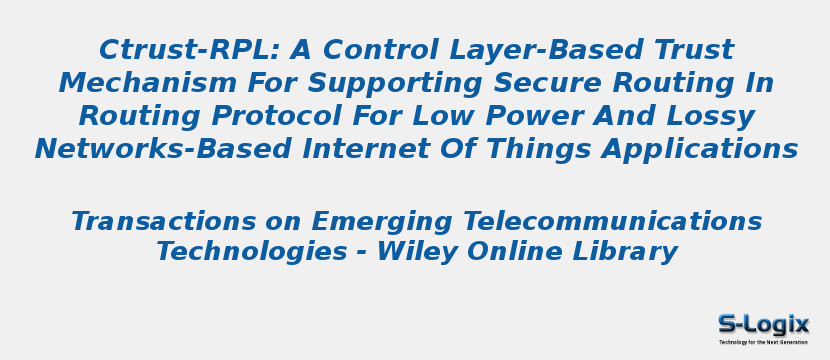Research Area: Internet of Things
Internet of Things (IoT) fostered a new epoch of innovation by interconnecting digital devices to make human life more convenient and attractive. These smart objects are largely deployed as low power and lossy networks (LLNs) and use routing protocol for LLNs (RPL) for routing. Unfortunately, it is extremely vulnerable to a large variety of external and internal attacks to cause devastating and calamitous effects. However, this articles scope revolves around internal attacks only, where nodes are already part of a legitimate network. Various trust-based mechanisms have been proposed to secure the RPL protocol from insider attackers. Existing trust mechanisms cause high energy depletion due to complex computation on the node level, which consequently decreases the performance of LLNs. Therefore, this article presents a novel hierarchical trust-based mechanism “CTrust-RPL” by assessing the trust of nodes based on their forwarding behaviors. This study ships complex trust-related computations to the higher layer, known as the controller, to save computational, storage, and energy resources at the node level. We also compare the proposed mechanism with a state-of-the-art technique called Sec-trust. Our mechanism demonstrates superior performance in detecting and isolating blackhole attacks. The results depict that CTrust-RPL detects and isolates 10 percent more malicious nodes than Sec-trust in the same time-lapse. The average packet loss ratio difference is less for our proposed mechanism, with 35 percent more energy efficiency.
Keywords:
Author(s) Name: Temur ul Hassan,Muhammad Asim,Thar Baker,Jawad Hassan,Noshina Tariq
Journal name: Emerging Telecommunications Technologies
Conferrence name:
Publisher name: Wiley
DOI: https://doi.org/10.1002/ett.4224
Volume Information:
